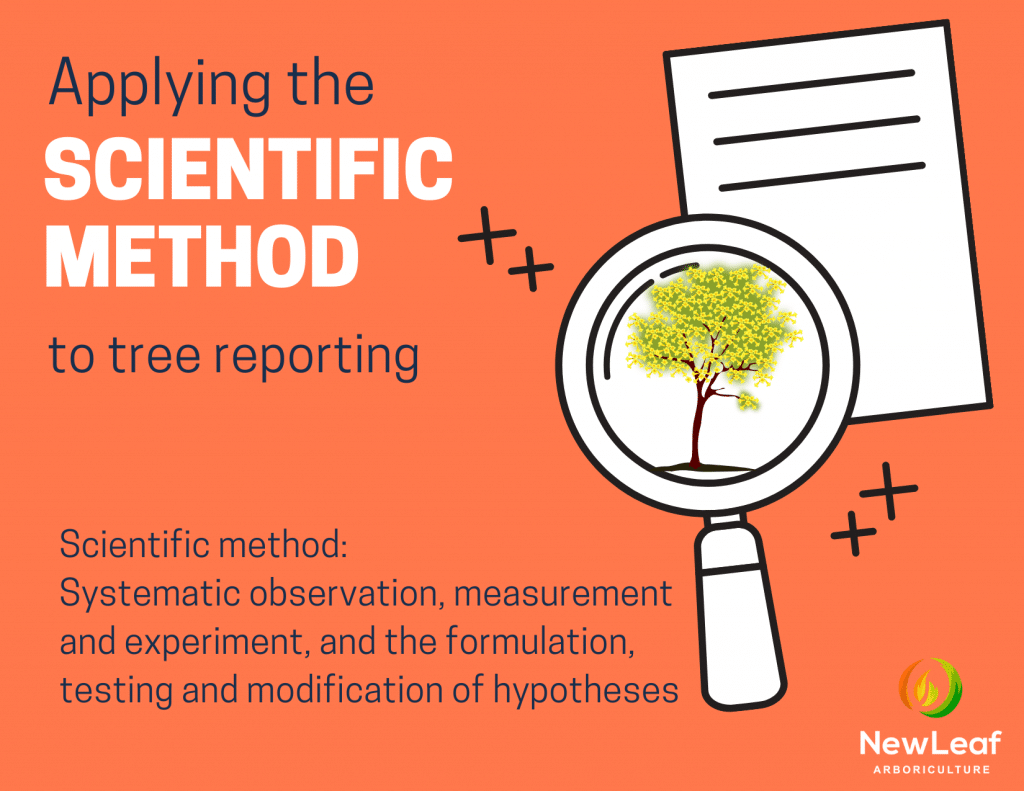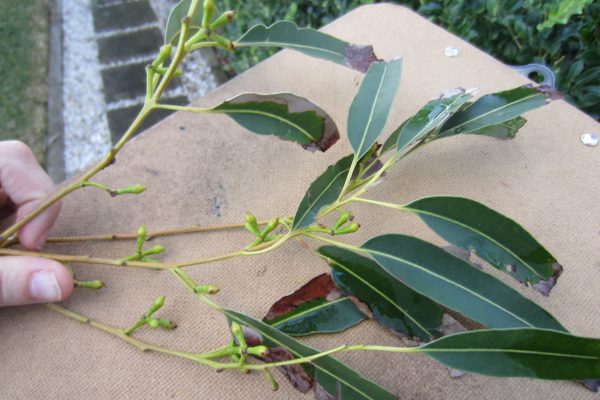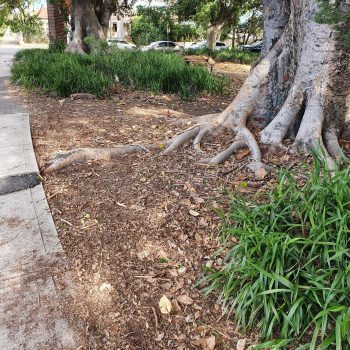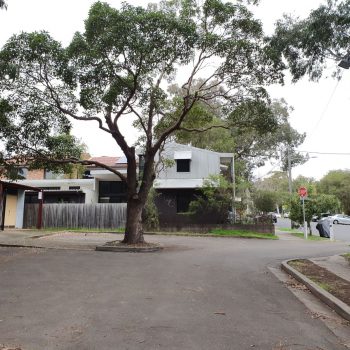Are you wondering how an arboricultural consultant goes about writing an arborist report?
This is the 2nd part to my previous article ‘Applying the Scientific Method to Tree Assessment’.
As I quoted in part one of this article, the definition of “scientific method” according to Google is:
a method of procedure that has characterised natural science since the 17th century, consisting in systematic observation, measurement, and experiment, and the formulation, testing, and modification of hypotheses.
Formulating and modifying hypotheses, carrying out further investigation and analysis of the information I’ve collected on site is the part that mostly happens after leaving the site and is the subject of this article.
I once read an opinion piece from another arborist which stated that after they’ve been to site, the intellectual part of their tree assessment is completed and the report writing is easy because they’ve already decided what will go into the report, so all that’s left to do is write it out.
However, if you’re a fan of Australia’s favourite scientist Dr Karl, you may have heard him say that the scientific method requires that conclusions may need to be changed based on new information. As I described in my previous article, more often than not the on-site observation, recording of information and forming of hypotheses is only the beginning of my assessment. I gather further information, carry out research prompted by my observations, fact check any information provided by others, and often I’ll come to different conclusions based on the information I’ve found at the end of all that.

So now that I’m back in the office, I review the information I’ve collected and make sure it’s complete and usable.
- I’ve taken plenty of photos and notes on site, and sketched on a plan view or mud map of the site. This allows me to recollect my observations more viscerally while sitting at a desk, and accurately elaborate on my observations in writing (I don’t rely just on photos in a report to communicate what I need to – photos should enhance the written description but the written portion of the report should be clear to understand even without images).
- It’s particularly important to record details like measurements while on site, to allow for analysis later. There should usually be no need for an arborist to go back to site to check a measurement or detail that could have been collected the first time.
- Being clear on the purpose of the assessment before even going to the site really helps to focus my attention on the details that need to be collected, and what tools or equipment I might need. I take note of anything I could have done differently in preparing for the site visit, so that I can be more effective and efficient next time.
Before I start writing the report, I get clear on the following:
- Be clear of my own assessment and conclusions before I start recording it in report or other written format, especially if using a report template, because it’s easy to be too constrained by the structure of a template report and miss out on important details or focus on the wrong details.
- Have suitable report templates that I’ve developed for each different type of arboricultural report, and different types of projects or properties. Templates should not be too prescriptive, because each tree and each site will be different and need different discussion points and recommendations.
- Be sure of the purpose of the advice – what does the tree owner or manager need to know, how can your expertise best help them, what are their expectations, what limits are there on the advice you can provide and on how well you’re able to meet their expectations, will the report need to go to the consent authority or court, and if so what other considerations need to be included in the report?
- I’ve provided preliminary advice to the client so that there are no surprises when they receive the report.
- Any research I need to carry out, and any further investigation that may be needed.
- I’ve checked the tree information table for errors and typos to make sure that the information is presented accurately.
- Which resources I’ll need to access to gather further information:
- Online mapping tools such as SIX maps, Google Maps & Streetview, NSW Planning Portal & individual Councils’ mapping systems
- Council DA tracking systems
- Legislation websites (including Council DCPs, SEPPs, and LEPs)
- Tree species databases, and pest and disease information about particular species’ susceptibility or presence of particular diseases in the location
- AutoCAD to calculate areas and measure distances relating to the trees, and present plans according the the project requirements
- Consult with colleagues where needed, such as the “brains trust” known as the IACA membership (Institute of Australian Consulting Arboriculturists)
So in a way, I do agree with that other arborist – writing an arborist report is only the recording and communicating of all the other work I’ve put into the assessment. It’s just that I keep an open mind as to the outcome, and keep working on it after leaving the site. I make sure I’ve done all of the above to provide a truly comprehensive assessment of the trees and the particular situation.
This article was written by Jacki Brown, Arboricultural Consultant and Director of New Leaf Arboriculture, to give some insight into the tree assessment process for the benefit of those seeking Arboricultural advice and fellow consulting arborists, and it was first published on www.newleaftrees.com.au.



